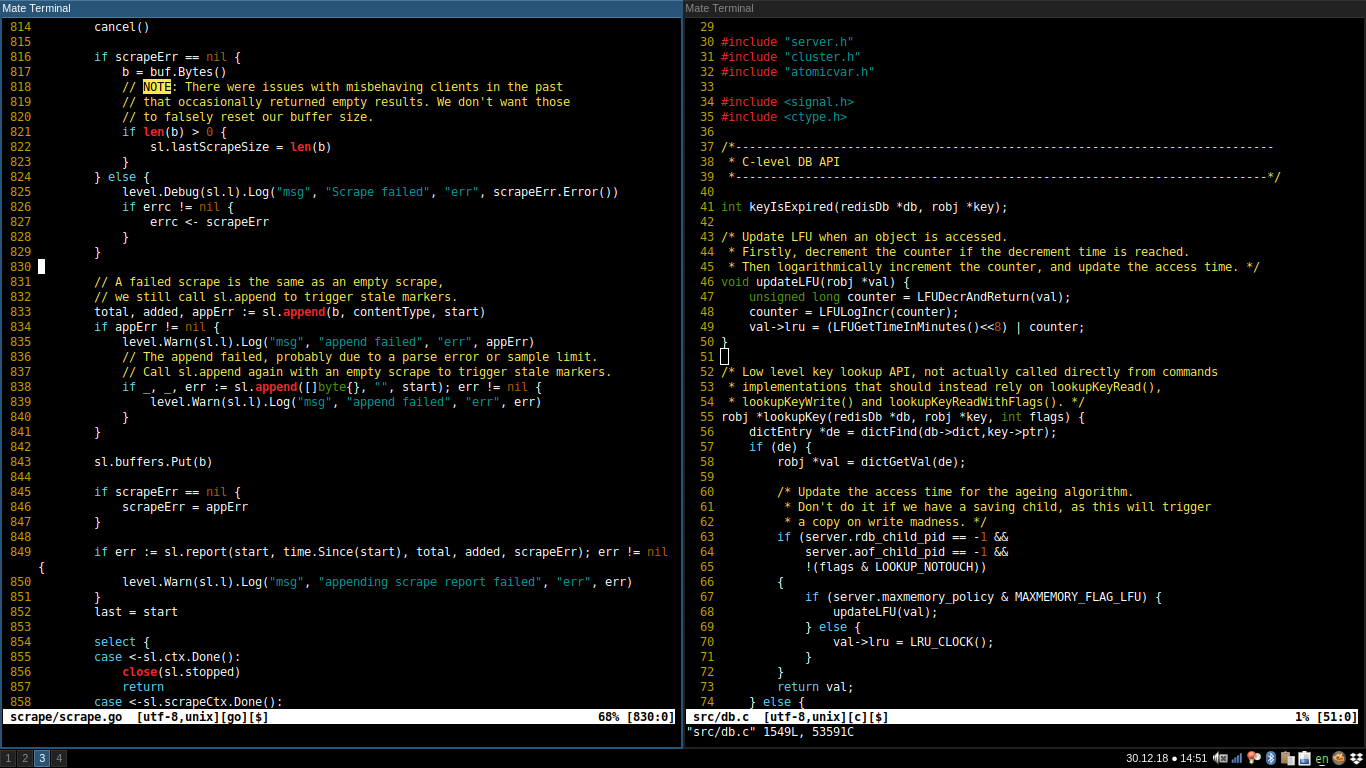

These are some of my must-haves in my tmux config:ĭuring the day, I’ll work on one or two Rails apps, work on my dotfiles, run tmux source-file ~/.nf reloads the current tmux configuration (based on a default tmux config) Tmux list-keys lists out every bound key and the tmux command it runs tmux list-commands lists out every tmux command and its arguments tmux info lists out every session, window, pane, its pid, etc. + selects the next pane in numerical order tmux split-window (prefix + ") splits the window into two vertical panes tmux split-window -h (prefix + %) splits the window into two horizontal panes tmux swap-pane - (prefix + ) swaps pane with another in the specified direction tmux select-pane - selects the next pane in the specified direction tmux select-pane -t. People argue that OS X’s Cmd+Tab is just asįast, but I don’t think so. I don’t have to switchĪpplications to switch contexts (editing, reading logs, IRB, etc.) - everything They’re the reason I wasĪble to uninstall MacVim and develop solely in iTerm2. Panes take my development time from bland to awesome. tmux new-window (prefix + c) create a new window tmux select-window -t :0-9 (prefix + 0-9) move to the window based on index tmux rename-window (prefix + ,) rename the current window
#Macvim switch tabs windows#
Way, I can recognize windows by context and not what application it’s running. The same thing goes for client applications. Organized, I rename all the windows I use if I’m hacking on a gem, I’ll name Tmux has a tabbed interface, but it calls its tabs “Windows”. tmux new -s session_name creates a new tmux session named session_name tmux attach -t session_name attaches to an existing tmux session named session_name tmux switch -t session_name switches to an existing session named session_name tmux list-sessions lists existing tmux sessions tmux detach (prefix + d) detach the currently attached session Open-source gems or other work I hack on at home. Need during my day-to-day development, while in ‘Play’, I keep open current ‘Work’ session and a ‘Play’ session in ‘Work’, I keep everything open that I Sessions are useful for completely separating work environments. That means you would first hit (and release) Control + b They’re accessed by entering a key combination called the prefixįor example, if you see prefix + d below, If a tmux command I mention is bound to a keyboard shortcut by default, I’ve compiled a list of tmuxĬommands I use daily to help me work more efficiently. Live in the terminal (and especially vim). Navigating output, and session management make it a no-brainer for those who Pane and window management, copy-mode for I’ve been using tmux for about six months now and it has become just asĮssential to my workflow as vim.


 0 kommentar(er)
0 kommentar(er)
